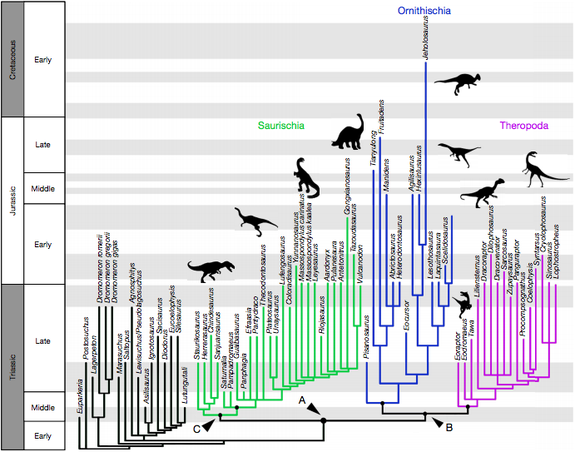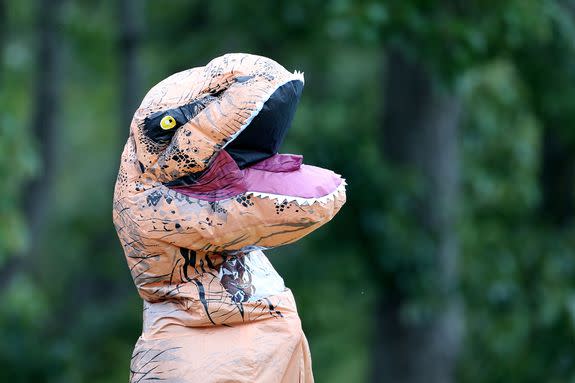Earliest dinosaurs may have originally come from Britain, new study says

Dinosaurs just can't get a break. First, a comet slams into the Earth and renders them extinct. Now a group of scientists wants to dramatically shake-up the dino family tree.
A new study, published this week in the journal Nature, proposes a major reordering of dinosaurs' evolutionary history.
The revised tree swaps around large subfamilies and adds a new branch for the Tyrannosaurus Rex and its ilk. The study also suggests that dinosaurs may have originated in the Northern Hemisphere, possibly in an area that is now Britain — not in South America, as scientists have long assumed.
SEE ALSO: A dinosaur-era reptile popped out babies, not eggs
"This is a textbook changer — if it continues to pan out," said Thomas Holtz, a vertebrate paleontologist at the University of Maryland in College Park, who was not involved in the research.
"It's only one analysis, but it's a thorough one," he told Nature.

Image: Baron et al./Nature
For the last 130 years, dinosaurs have been divided into two distinct groups: Ornithischia, with bird-like hips, and Saurischia, with lizard-like hips. The stegosaurus is in the first group; the brontosaurus falls into the second.
A Victorian paleontologist named Harry Seeley devised the two categories in 1888, and scientists have adopted this approach ever since. But Matthew Baron, a doctoral student at the University of Cambridge in England, said it's time to break this binary.
Baron, the study's lead author, spent three years studying 450 features of 75 dinosaur species. With his colleagues, he compared the size, shapes and arrangements of fossilized bones, then used computer simulations to group together species with similar characteristics.

Image: dianne manson/Getty Images
After analyzing 32 billion possible family trees, the computer program spat out 80 most likely scenarios, which Baron combined to construct his new family tree.
The theory "means that animals that we've always thought were very closely related to each other might not be," Kristi Curry Rogers, a paleontologist at Macalaster College in Minnesota who wasn't part of the study, told the Associated Press.
One of the biggest shake-ups involves theropods, a group that includes the T. Rex and other ancestors of modern day birds. Theropods have long been considered an offshoot from the lizard-hipped Saurischia. Baron's study not only moves them to the bird-hipped Orinthischia category but also creates a separate theropod branch.

Image: baron et al./nature
The Nature study also suggests that dinosaurs appeared some 247 million years ago, or about 10-15 million years earlier than previously believed. The earliest dinosaur may be the plant-eating Nyasasaurus, which stood 6 to 10 feet tall and was found in Tanzania.
But the earliest dinosaur ancestor might be a small, dinosaur-like creature found in present-day Scotland, according to Baron. That would shift the dino's origin point away from South America, where several very early dinosaurs have been found. However, other dinosaur experts said there is not enough evidence to support this shift.
And even after centuries of digging up dino bones, more clues may be hiding in the dirt that could reshape scientists' understanding of the current family tree or Baron's proposed redesign.
"For many regions of the world, there's so much we don't know about the fossil record," Hans-Dieter Sues, a vertebrate paleontologist at the Smithsonian Institution's National Museum of Natural History, told Nature.
